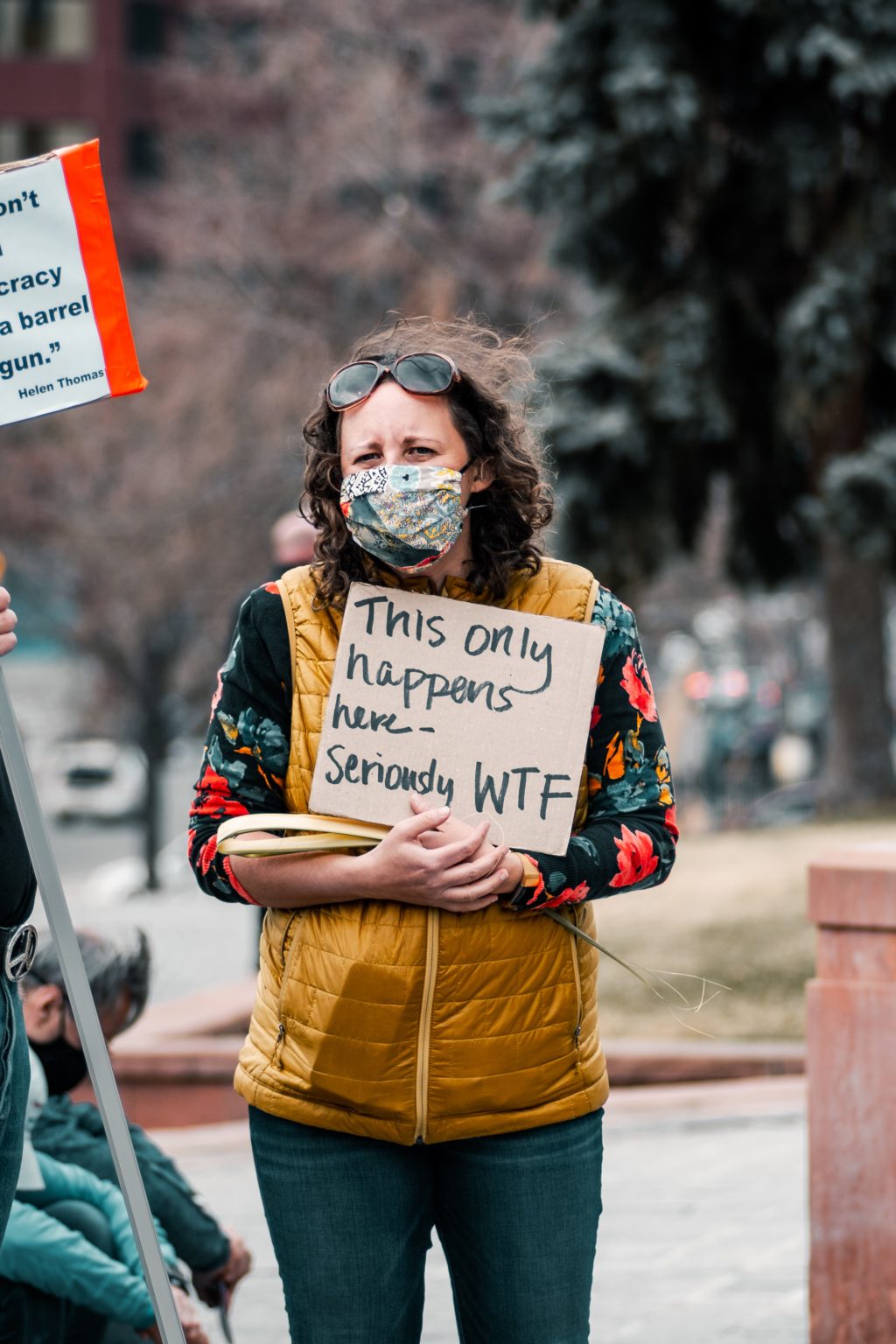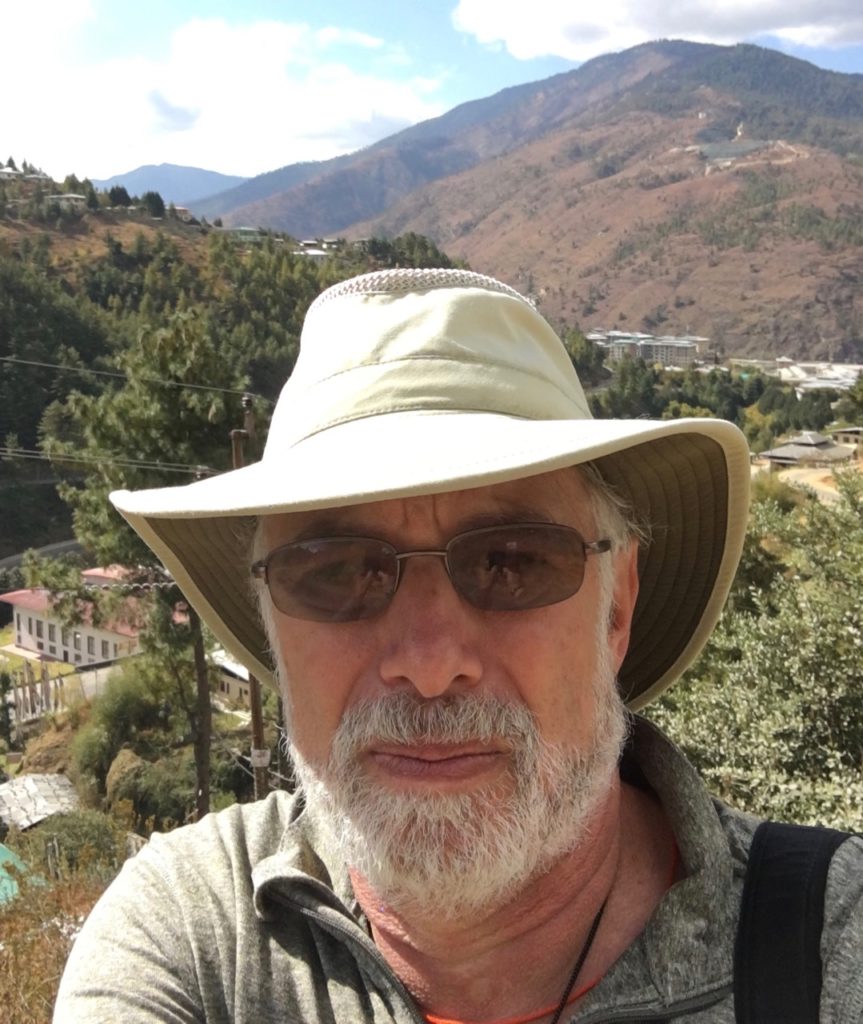Opinion: A Better World Is Possible. It Only Happens Here

Photo: Colin Lloyd.. Unsplash

It doesn’t happen anywhere else in the world; the mass shootings, the slaughter of children, the nearly daily massacres. Last week, 22 people died (including 19 children and two teachers) and 17 were injured in a school shooting in Uvalde, Texas. A few days before, ten died in a racist rampage in Buffalo, NY. There have been 20 mass shootings in the US in the ten days since Uvalde. In the 22 years since the shooting at Columbine High School in Colorado there have been over 300 additional shootings at schools in the US; 42 last year and 22 already this year. After each shooting there is the now familiar, agonizing communal grief followed almost instantaneously by warnings from Republicans that regulating guns will not solve the problem.
Except that it will. The science, the social science, and the empirical record is clear. Strong gun regulation dramatically reduces gun deaths. This has been true in other countries that have largely eliminated the threat of mass shootings and it is true here in the United States, where gun massacres persist but where the likelihood of being killed by a gun is highest in the states with the laxest regulations.
And yet, in spite of the emergence since Columbine of dozens of grassroots activist organizations working to promote stricter gun laws ( e.g. Sandy Hook Promise, Giffords, Moms Demand Action, March For Our Lives, The Brady Campaign, Everytown for Gun Safety) gun policy has only become weaker with each passing year. Whereas in other countries, mass shootings are followed by the adoption of stiffer regulation, in the US, each mass shooting seems to engender further relaxation of gun laws, exemplified most recently by the Governor of Texas signing into law the day after the Uvalde massacre, new regulations permitting anyone over 21 to carry a handgun in public without a permit or training.
It’s Not Rocket Science: Strong Gun Laws Save Lives
Each mass shooting in the U.S. is followed by a cascade of rhetorical gymnastics asserting that gun regulation has had no impact on mass murder. Each massacre is followed by the familiar cry from gun zealots for more guns, e.g. for the now familiar demands to arm teachers and place more armed personnel inside schools and by the assertion that gun laws don’t help. One favorite “fact” that gun lobbyists cite is that California, which has the strictest gun laws in the nation, also has a fairly high number of gun deaths. And this is true. As the most populous state in the nation, California has a lot of guns and a lot of gun deaths. But when we look at gun deaths as a percentage of the population, there are only four states that do better than California with its rate of 8.5 annual gun deaths/100,000, (Hawaii is best with 3.4/100,000 and Massachusetts is second with 3.5/100,000. Mississippi does the worst with 28.6/100,000). One has almost a 60% higher chance of dying from a gunshot in a low regulation state like Texas than in a high regulation state like California. Furthermore, California has a strong track record of responding to gun deaths with stricter and impactful regulation, and it knows its interventions are impactful because it is one of the few states that systematically studies the impacts of new gun regulations.
A World Without Gun Massacres Is Possible
Here’s a reminder that in this column we look at examples from around the world that suggest solutions to problems that we face locally but that we might not yet have imagined or considered or tried. The aim is to make the case that an alternative and possibly better path is possible. In this case I am arguing that there is good cause to trust our eyes and believe that a life without mass shootings is possible. Hence my intent here today is not to offer a strategy for jumpstarting government action for sane gun policy but simply to illustrate that sane gun policy exists and works in many countries around the world, including countries with strong gun lobbies (Australia) or with a strong history of private gun ownership (Canada), and in those countries, mass shootings are now mostly nonexistent. In several of these countries, stronger gun laws were adopted, to good effect, after their first and only incidence of a mass shooting.
First Some Numbers, Then Some Examples
- Americans have the most guns and the highest gun/population ratio of any nation in the world
– 393 million guns (or 120 guns for every 100 Americans) - Americans are 25 times more likely to be killed by a gun than residents of any other high income country
- Guns are now the leading cause of death of children under age 18 in the U.S
- Over 1 million Americans have been shot in the past decade, and gun violence rates are rising
- Gun deaths disproportionately affect Black men in the U.S. – who make up 52% of all homicide victims while representing only 6% of population
- Black men are five times more likely to be shot by police than white men
- 25 million American adults have been threatened or non-fatally injured by a domestic partner using a gun
- “Gun rights groups” spent $15.8 million lobbying Congress in 2021.
- America has the weakest gun laws in the world. Since 1999 there have been over 300 school shootings in America. In Canada there have been 2.
(References and for more statistics: Giffords Law Center)
Some Examples Of A Better Way
In countries where it is harder to own a gun, or where the use of a gun is highly regulated (background checks, rigorous licensing, waiting periods, mandatory training, storage requirements, regulation of amount or kind of ammunition that can be purchased, restrictions on open carry), or where private ownership of assault weapons is banned, gun deaths are considerably lower and mass shootings are close to non-existent.So, in spite of the protests that America is exceptional and culturally averse to such policies, it seems that we could lower gun deaths, and perhaps even eliminate mass shootings by adopting some of these policies.
Australia
There was a mass shooting in Port Arthur, Australia in 1996 in which 35 people were killed. In response to the shooting, the Australian government enacted the National Firearms Agreement, banning automatic and semi-automatic rifles and pump-action shotguns. They also undertook a weapon buy-back scheme that removed 650,000 weapons from circulation. Prior to the Port Arthur massacre, there had been 13 mass shootings within 18 years. There has not been another mass shooting since Port Arthur and since then there has been a sharp decline in gun-related deaths. In a country of roughly twenty-seven million people, there are still a lot of guns in private hands—in 2020, there were an estimated 3.5 million, as well as a strong gun lobby. And yet, after the government tightened gun restrictions, mass shootings stopped and gun violence declined. (Learn More)
Canada
In 1989, a 25 year old misogynist armed with a semi-automatic rifle, gunned down fourteen female students and staff members at an engineering college in Quebec. Canada’s regulatory response to the massacre included adopting a twenty-eight-day waiting period for the purchase of guns, expanded background checks (including mandatory references from domestic partners of the past two years), a national registration system, and a ban on large-capacity magazines for semi-automatic weapons. In recent years, Canadian governments have further tightened gun laws. In 2020, after a shooter in Nova Scotia killed 22 people using a Ruger Mini-14 tactical rifle, Prime Minister Justin Trudeau issued an executive order banning fifteen hundred “assault style” weapons, including the AR-15 and the Mini-14. And last week following the Uvalde shooting, Trudeau introduced legislation to effectively ban the importation and sale of handguns in Canada (Learn More).
United Kingdom
In 1996, a man opened fire in a school gym in Scotland killing 16 children and an adult. That led to British legislation banning the ownership of most handguns. Automatic and semi-automatic rifles had already been outlawed in response to the 1987 Hungerford Massacre where 16 were killed. That incident also sparked a public campaign known as the Snowdrop Petition, which helped drive legislation banning handguns, with few exceptions. The government also instituted a temporary gun buyback program, which many credit with taking tens of thousands of illegal or unwanted guns out of supply. Within a year, Prime Minister John Major’s Conservative government had banned all handguns except for .22-calibre pistols; Tony Blair’s successive Labor government banned those, as well. There has not been another mass shooting since the incident in Scotland. (Learn More).
References And Further Reading
The Science is Clear. Gun Control Saves Lives. by The Editors of Scientific American. (Scientific American) (5/26/22)
We Know What the Problem Is. by H. Holden Thorp. (Science) (5/26/22)
How to Prevent Gun Massacres. Look Around the World. by John Cassidy. (The New Yorker) (5/25/22)
US Gun Policy: A Global Comparison by Jonathan Masters. (The Council On Foreign Relations) (5/14/2021)
On Guns and Inflation, Americans Ignore The Rest Of The World by David Atkins. (Washington Monthly) (6/2/22)
Lessons In Gun Control From California by The Daily.(New York Times) (6/2/22)
Is It Time To Bring Back The Assault Weapons Ban? by Katharina Bucholz. (Statista) (6/2/22)
A Comparison of Canadian Gun Licensing and US Law by Dylan Matthews. (Vox) (10/24/14)
*
A Better World Is Possible is a mostly weekly Indy feature that offers snapshots of creative undertakings, community experiments, innovative municipal projects, and excursions of the imagination that suggest possible interventions for the sundry challenges we face in our communities and as a species. The feature complements our regular column by Boone Shear, Becoming Human. Have you seen creative approaches to community problems or examples of things that other communities do to make life better for their residents that you think we should be talking about? Send your observations/suggestions to amherstindy@gmail.com. See previous posts here.
Art Keene is Professor Emeritus of Anthropology at UMass Amherst. He was co-founder and co-director of two social justice-based civic leadership programs at UMass, the UMass Alliance For Community Transformation (UACT) and the Community Scholars Program. He is Managing Editor of the Amherst Indy.
